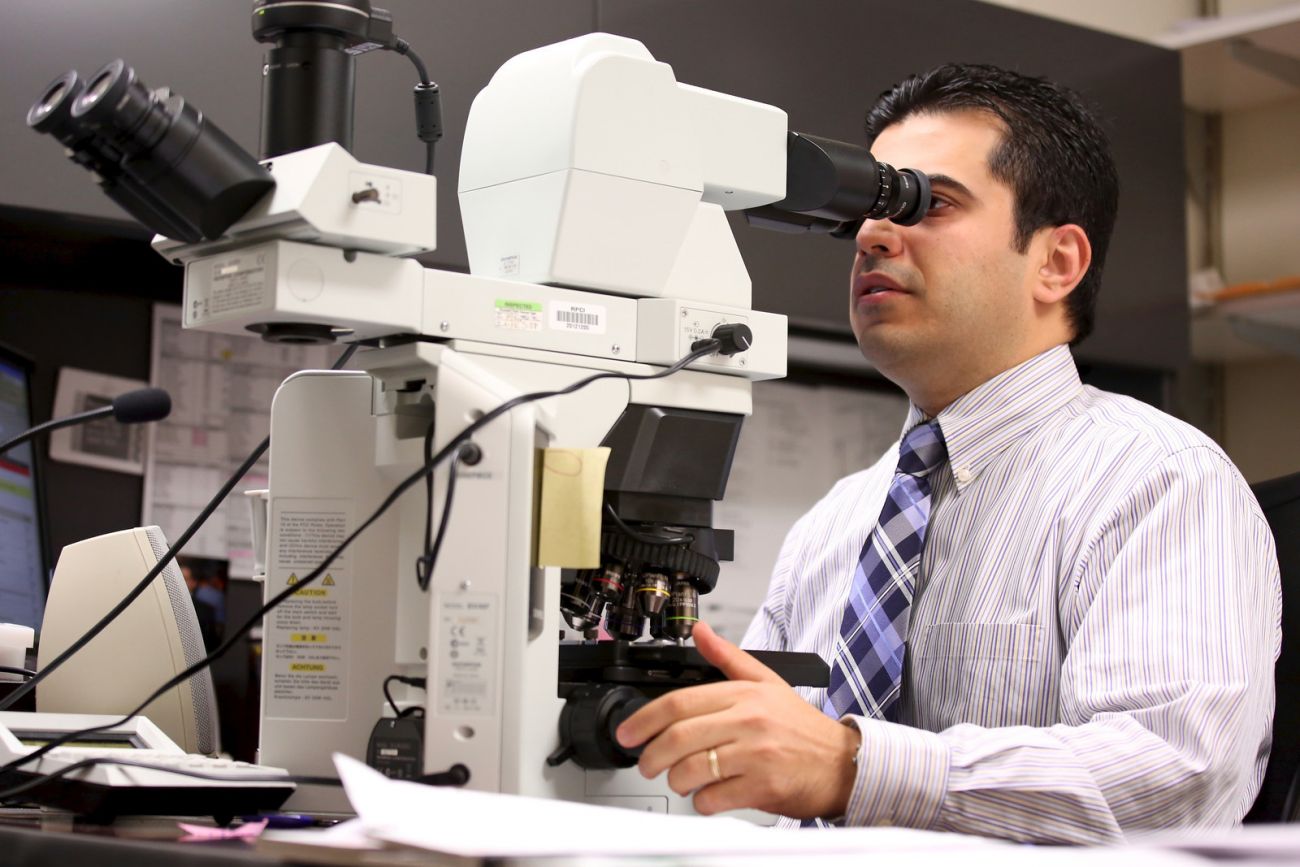Understanding your illness is vital to making informed treatment decisions — and that begins with understanding the words related to a cancer diagnosis. Here are a few important words you should familiarize yourself with.
A biopsy is a procedure in which a sample of tissue (a specimen) is removed from a suspicious area so it can be examined by a pathologist. A pathologist is a doctor who uses a microscope and special tests to identify any diseases found in the tissue samples. Biopsies can be taken:
- Through a needle: fine needle aspiration or core needle biopsy.
- Through surgery, either incisional (removing part of a lump or suspicious area) or excisional (removing the entire lump or suspicious area).
- With an endoscope — a thin, flexible tube fitted with a lens or camera that enables the doctor to look inside the body and take biopsies.
- By collecting bone marrow cells.
- By shaving cells off the surface of the skin (shave biopsy) or removing a core of tissue (punch biopsy).
After studying the biopsy samples, the pathologist provides a diagnosis in a pathology report. You are legally entitled to a copy of your report. It’s a good idea to bring a copy to your doctor appointments. Your doctor will review it with you, explain the results, and discuss treatment options. During this visit, ask questions, voice your concerns, take notes or make an audio recording, or bring someone with you to help with these things.
If you do have cancer, the pathology report can be used to stage the cancer, or describe the amount of cancer in your body. Stage is based on tumor size and whether the cancer has spread to the lymph nodes or other parts of the body. (Not all cancers have a staging system, and some types of cancer have more than one.)
Grade is a way of describing the cancer cells. The pathologist compares the appearance of normal and abnormal cells taken from the same tissue. This provides information about how quickly the tumor is likely to grow and spread, and it also affects treatment decisions. (There are different systems for grading tumors depending on the type of cancer.)
- Grade 1: This means the cells are low grade or well differentiated (they look more like normal cells), and slow-growing.
- Grade 2: The cells are intermediate/moderate grade or moderately differentiated, and grow a little faster than normal cells.
- Grade 3: The cells are high grade or poorly differentiated, and fast-growing.
Want to know more? The Association of Directors of Anatomic and Surgical Pathology has prepared Frequently Asked Questions about pathology reports for breast, colon, lung, prostate, and esophageal cancers. You can find them on the American Cancer Society website.
Information on this blog is provided by Roswell Park’s Patient Education Department.
Questions? Comments? Please call: 716-845-8784
